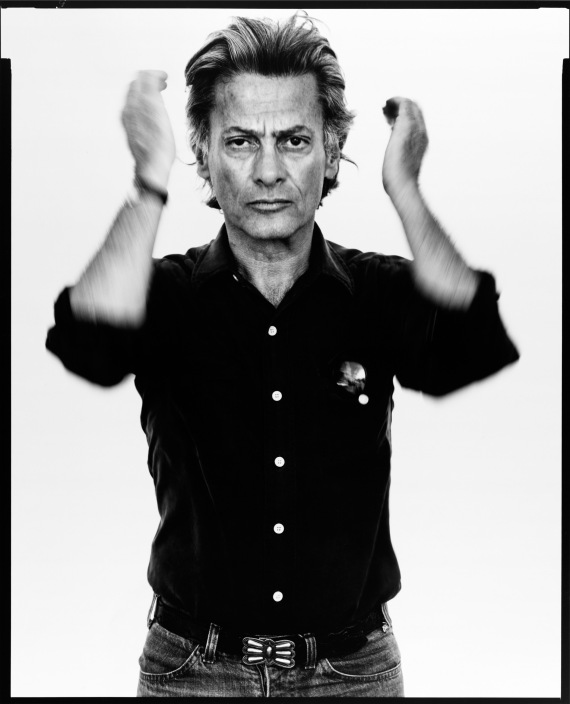
Richard Avedon, artist photographer
Richard Avedon, self-portrait captured in 1980
Avedon is an artist before being a photographer. The relationship between himself and his subject is that of a sculptor and its clay. He claims that a photograph is fiction: it is the vision of the photographer. A photograph is the death of a moment.
Richard Avedon (1923 – 2004) is a fashion and portrait photographer. His fashion photographs and portraits were largely praised for helping to define the cultural image of America and the standards of beauty during the second portion of the twentieth century. For Avedon, fashion was his livelihood, and the portrait his true passion. He has often described the importance of establishing a relationship with his subject, who in a way became a mirror of his own personality that he was able to capture.
Avedon was born in New York, in a Jewish family. His father, Jacob Israel Avedon, was an immigrant of Russian origin who managed to launch a successful retail business by selling dresses on Fifth Avenue, called “Avedon’s Fifth Avenue”.
Very young, the first muse of the future photographer was his younger sister, Louise. During her adolescence, she struggled to maintain her mental health, while straying more and more away from reality. This experience of youth has influenced his vision of fashion and shaped his life and his career. He always sought to capture the tragic beauty in his photos.
In 1946, his photographs started to be published in “Harper’s Bazaar” and he became chief photographer for the magazine. In 1962, he became a photographer for Vogue. Until 1973, he produced the majority of the covers for the magazine.
The Calvin Klein campaign with Brooke Shields when she was barely 15 years old in 1980 remains until today an iconic image.
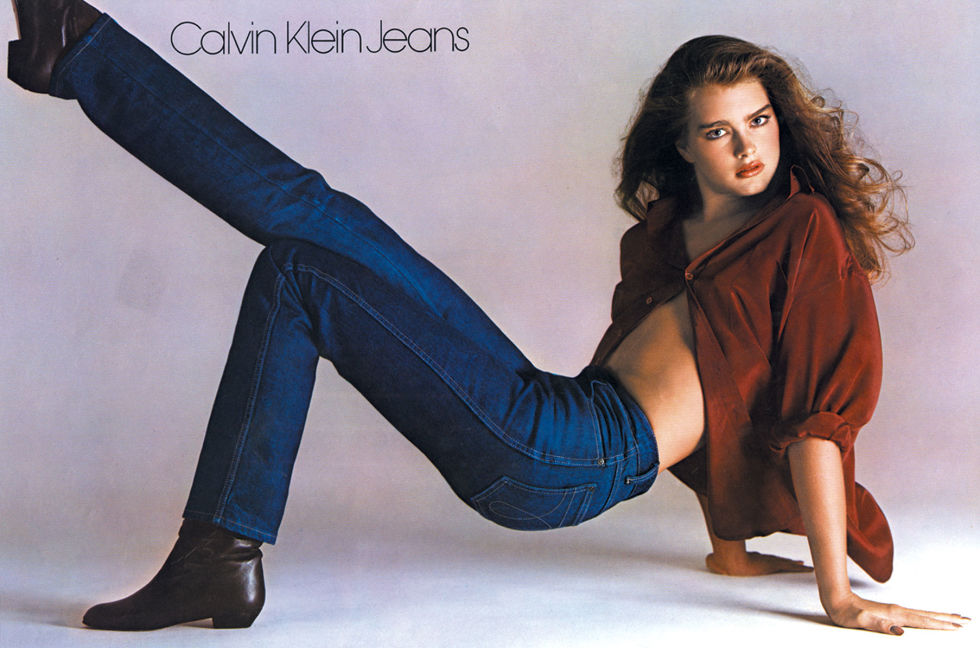
Brooke Shields, Calvin Klein campaign of 1980
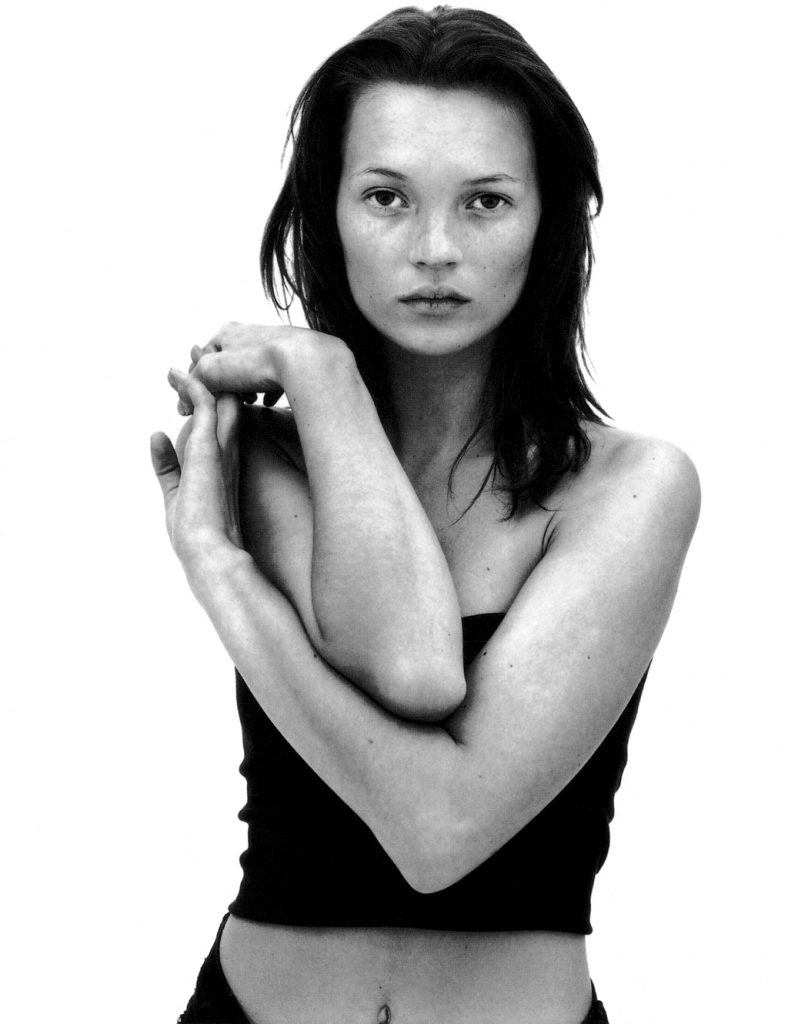
Calvin Klein campaign with Kate Moss in 1997
In addition to his productions for the fashion industry, from 1960, Avedon accumulated in the studio portraits of defender of civil rights, politicians, artists, political dissidents, patients of psychiatric hospitals, of demonstrators against the Vietnam War, and of the event of the fall of the Berlin Wall.
Avedon’s portraits are said to reveal more than they flatter. A portraitist works a bit like an interviewer: with a time constraint, they must ensure a performance on the part of the subject.
Avedon has already said “All photographs are accurate. None of them is the truth.”, Avedon understood that a photograph is a collaborative art between the photographer and the subject, a reciprocal exchange. He liked to use stories to evoke reactions from his subjects and play with their emotions, which allowed him to capture the expressions he wanted to show.
The best example is the portrait he produced with the Duke and Duchess of Windsor. Here is a photo of the couple taken in the Bahamas by the Vancouver Sun in 1940 (the photojournalist is not identified)
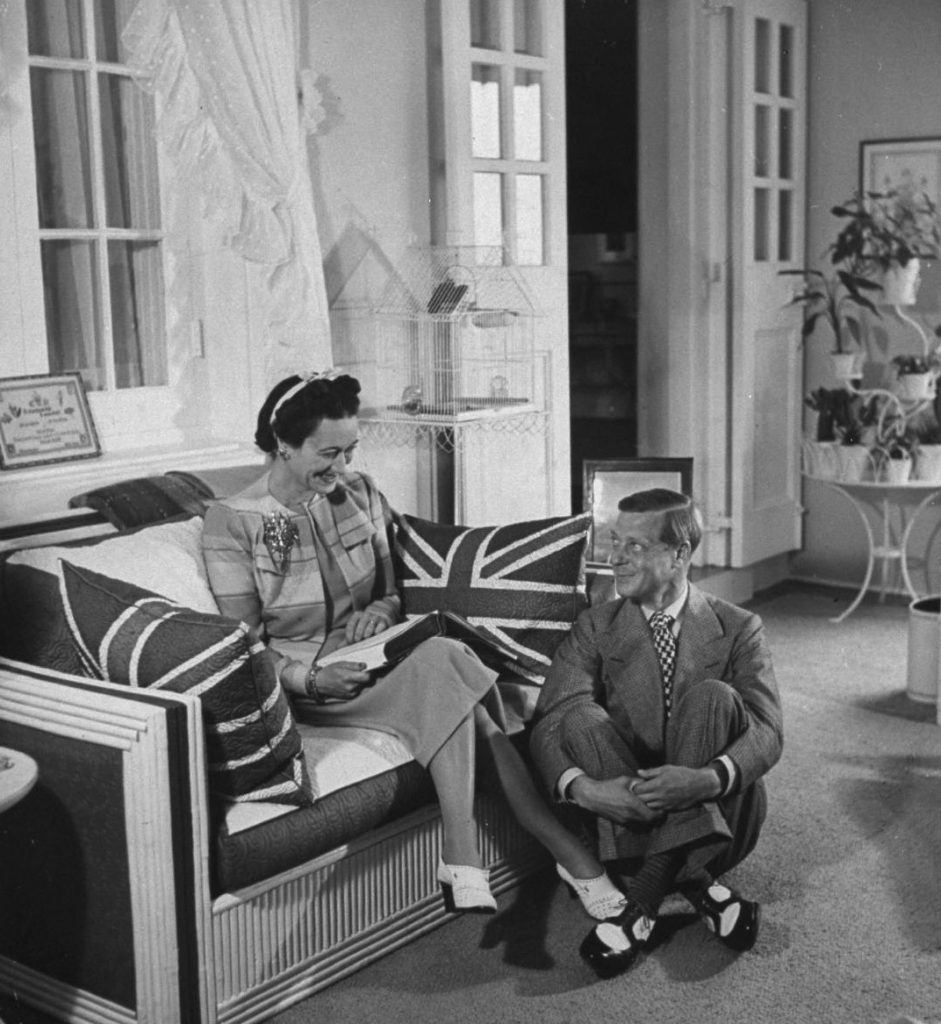
Duke and Duchess of Windsor taken in the Bahamas and published by the Vancouver Sun in 1940
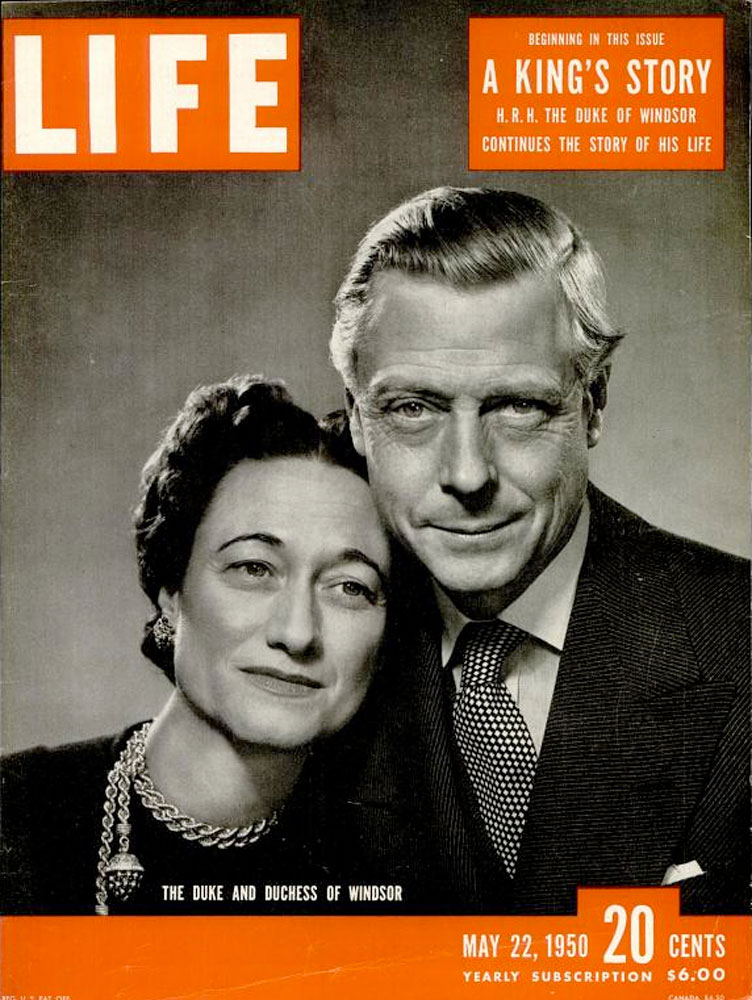
Cover photo of Time in 1950 of the Duke and Duchess of Windsor
After abdicating to the throne of England to marry the woman he loved, Edward VIII received the title of Duke of Windsor, and his new wife Wallis Simpson became the Duchess of Windsor at the time of their marriage in the 1930’s. Wallis was a worldly writer with two ex-husbands. In addition to political controversies that their romance produced in Great Britain during the Second World War, the Duke and Duchess of Windsor were also suspected by many to be Nazi sympathizers.
Avedon knew that his subjects were accustomed to photo sessions and that they expected a usual classic session like all other sessions in the past. Avedon knew that the couple loved dogs. While they were sitting in front of the camera, he told them that on the way to come and meet them, his taxi had struck and killed a dog.
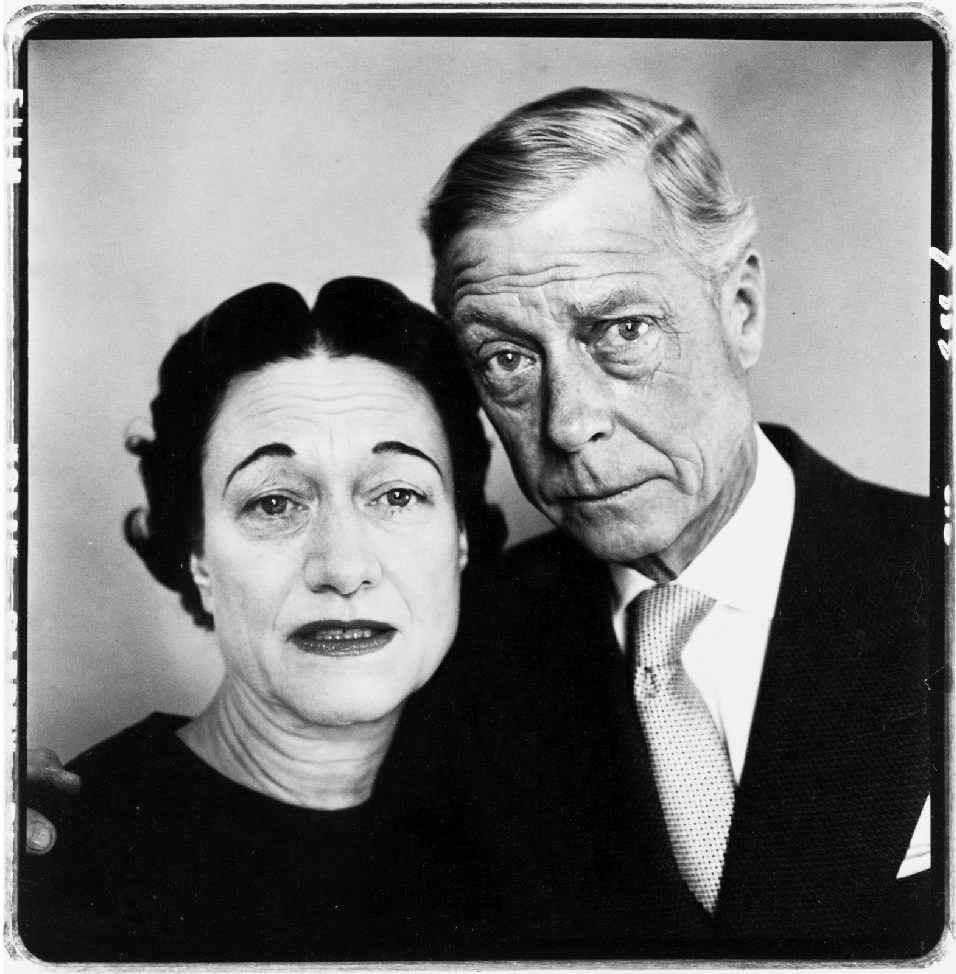
The Duke and Duchess of Windsor at Waldorf Astoria in April 1957
“In the American West” Project
This project was a turning point in Avedon’s career. He decided to undertake a great tour of the American West in search of subjects representative of the working class in the context of their work, including minors, stay-at-home women, the farmers, the homeless. He wanted to break off from the mold of documenting well-known personalities, the misleading attitude of the stardom industry. The project lasted five years and was completed in 1985 by the production of an exhibition and a catalog of more than 762 subjects.
Citations of Avedon that deserve a discussion
“I hate cameras. They interfere, they’re always in the way. I wish: if I could just work with my eyes alone.”
“I believe that you’ve got to love your work so much that it is all you want to do.”
“I think all art is about control – the encounter between control and the uncontrollable.”
“Anything is an art if you do it at the level of an art.”
“There is no such thing as inaccuracy in a photograph. All photographs are accurate. None of them is the truth.”
References, Richard Avedon Reviews
The Guardian, 2017, In the American West
Some of the most powerful portraits that Richard Avedon ever shot were those commissioned by the Amon Carter Museum of Art, in Fort Worth, Texas, in 1979. A selection of images from the series In the American West, showing the people he photographed in Texas, will be on show at the museum until 2 July.
Richard Avedon’s ‘In the American West’ By The ASX Team on January 24, 2011
5 Lessons Richard Avedon Has Taught Me About Street Photography, Eric Kim
Richard Avedon, 2013, Darkness and Light, YouTube video
Retrospective of the life and work of Avalon, by the Corporation for Public Broadcasting, American Masters Series
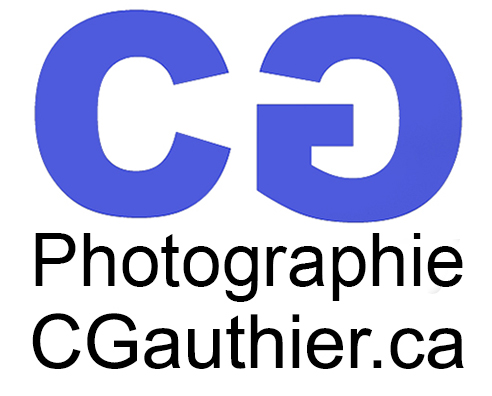

No Comments